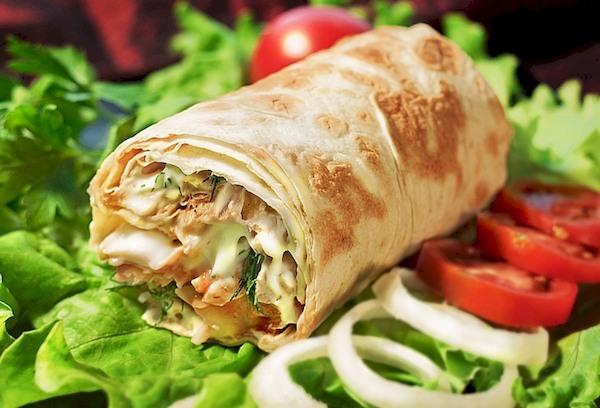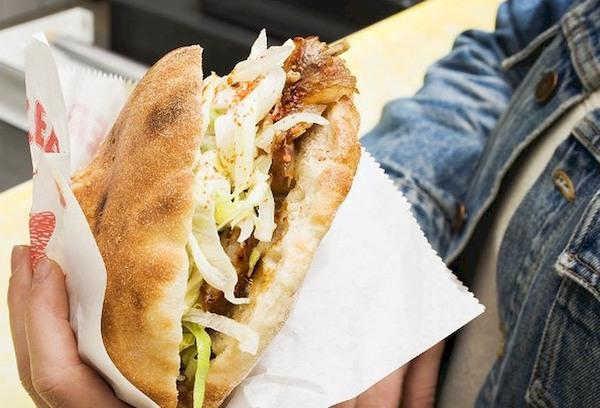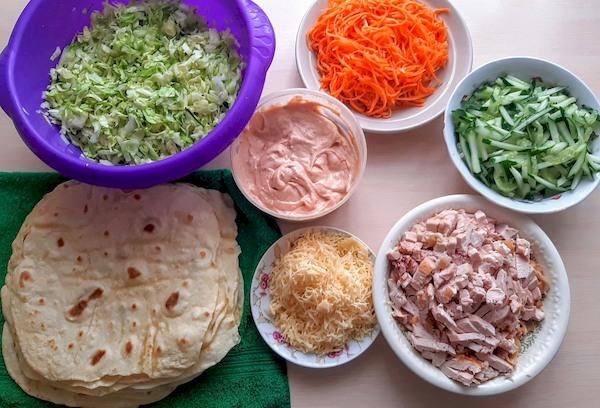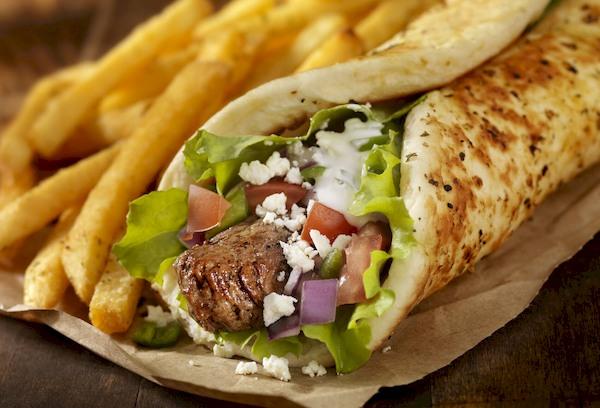What is the difference between shawarma and shawarma and how to call the dish correctly
To understand the difference between shawarma and shawarma, and how to correctly call one of the most popular street food dishes in the post-Soviet space, it is worth plunging into the history of the food, getting acquainted with the gastronomic traditions of the largest cities in Russia, and even considering the opinions of leading linguists.
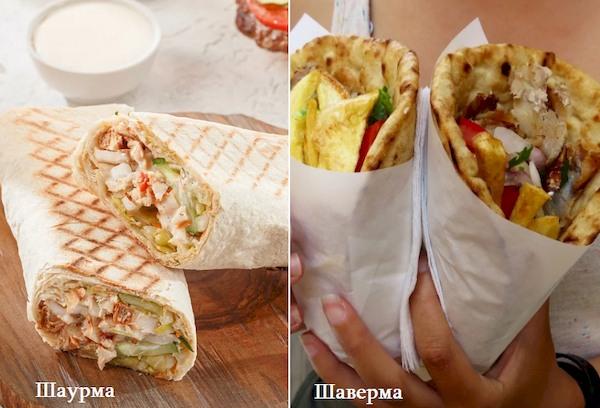
Origin
It is believed that the “prototypes” of this dish were known back in the Middle Ages in Persia, Turkey, and also in the European Mediterranean. And then the culinary customs of many cultures spread widely, rapidly changing, as a result of which one day, already in the early 90s of the 20th century, street eateries began to emerge and conduct a thriving business in the countries of the former USSR, where they sold it in the heat of the day.
Main features
Whatever the name of this dish and no matter how creative the cook is, the preparation of this dish has a number of its own, characteristic and unchanging principles:
- The meat is fried on a grill or vertical grill. The second, by the way, looks much more impressive, attracting the eyes of potential buyers with its abundance of meat. Small pieces are cut off from a huge amount of meat as needed - thanks to this approach, it remains hot, soft and juicy for a long time, and does not yet become covered with a weathered crust. The meat base of the dish can be chicken, pork or lamb.Options with rabbit, turkey, beef and fish are almost impossible to find in most places that generally sell shawarma or shawarma.
- Vegetable supplements are required. Often these are cucumbers, tomatoes, white or Chinese cabbage leaves, red or onions - and all this is fresh. Fresh herbs are also often added to the filling - parsley, dill, cilantro.
- The filling always ends up between the two halves of any bread product or is wrapped in it. Ideally, the bread “wrapper” of a dish should be baked right there – where it is prepared, but this, of course, does not always happen.
Other ingredients are also possible, namely:
- Canned foods – olives, Korean carrots, pickles.
- Sauces - from ketchup to garlic, sweet and sour, Caesar.
- Cheese – grated, mainly hard varieties.
- Potatoes – baked in wedges or fries.
Whatever is in the shawarma-shawarma, before giving it to the guest of the establishment, it is customary to heat it in a double-sided grill - until the bread has an appetizing golden brown hue.
Geographical differences
There is no consensus among critics of street cuisine, but there are interesting versions that in Moscow the dish is usually wrapped in thin Armenian lavash, and in St. Petersburg - in pita or bun.
It is noteworthy that very similar dishes can be found in almost all countries of the world, but with differences both in names and in cooking traditions:
- America. It is curious that in Canada and the USA its name is pronounced close to “shavarma” and is prepared almost the same as in Russia.
- Greece. True to its name, “gyros pita” is served in this delicious hollow flatbread, always with baked potatoes and a sauce based on natural Greek yogurt.Almost always, cucumbers and tomatoes are also added, which, by the way, in this country are usually cut very coarsely.
- Japan. Surprisingly, the local “shawarma” has hardly changed under the influence of local cuisine and is very similar to what is prepared in Russia. It is very popular to add a sauce made from a mixture of mayonnaise and ketchup.
- Poland. A dish called “kebab” is often served with a lot of spicy spices, and the most popular meat ingredient is chicken.
- Germany. In the “doner kebab” here, the German culinary tradition gradually introduced the addition of cabbage and, of course, onions. By the way, the meat for the dish is often kept in barbecue marinades, but is cooked on traditional vertical spits.
- Great Britain. Called “kebab,” they serve a dish generously flavored with garlic and chili pepper.
- France. It is served in an original way - with chilled meat, generously sprinkled with sauce, and is called “durum”.
- Armenia. It is called “brtuch” and is not served without cheese. There is also a local variation of the dish called “kasi-khorovats”, which differs in that the meat is wrapped in a flatbread with a whole kebab.
- Brazil. The name is again close to “shawarma”; there are usually few ingredients, but a vinaigrette dressing is required - made from vegetable oil and vinegar.
- Israel. The dish is known as "shvarma" and is most often prepared from lamb with the addition of eggplant and an abundance of seasonal greens. Local specialties also include pickled radishes and tahini, a thick paste made from ground sesame seeds.
- Estonia. Here the dish has one of the most complex names - “cana tortilla” and it is served with a generous seasoning of pepper and the addition of blue cheese to the filling.
But it is impossible to find sources with unambiguous information that one dish with a specific list of ingredients can be called shawarma, and a dish with a different assortment of ingredients should be called shawarma and nothing else.
Linguists' opinion
The most reasonable theory is that both names of the dish come from Arabic, where similar words denoted verbs (for example, to fry over a fire or to wrap something cooked on the grill).
According to academic dictionaries published with the participation of employees of the Moscow Institute of Russian Language named after V.V. Vinogradov RAS, for written speech there is only one correct option - shawarma.
True, over time, the situation may change and shawarma and even other, rarer variants of the name of this dish (for example, shvarma) may find a place in dictionaries - after all, the modern Russian language is distinguished not only by the preservation of traditions, but also by some plasticity, it is developing.
To summarize, we can say that shawarma and shawarma are the names of the same dish. Basically, the whole point of confusion is that it may be called shawarma more often in one place, and shawarma in another. There is simply no fundamental difference. But it is important to remember that this dish can only be called real shawarma or shawarma if it is prepared from fresh, high-quality ingredients, and the cook does not skimp on the amount of filling and serves it piping hot.
